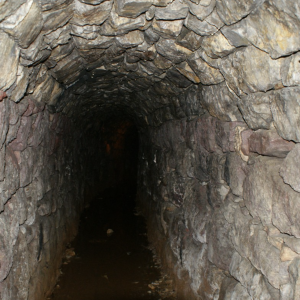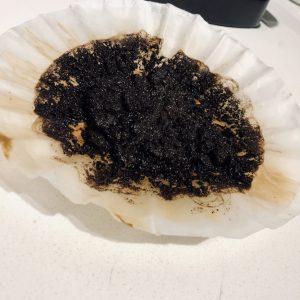Want to experience the greatest in board studying? Check out our interactive question bank podcast- the FIRST of its kind here: emrapidbombs.supercast.com
Authors: Siena Hapig-Ward, MS3; Blake Briggs, MD; Mary Claire O’Brien, MD
Introduction
Patients with advanced cirrhosis may develop “spontaneous” infections that occur in the absence of an obvious source, including spontaneous bacterial peritonitis (SBP), spontaneous bacteremia, and spontaneous empyema. Many patients have ascites that makes their abdomen distended like a balloon. SBP makes that balloon quite dangerous. It’s an ascitic fluid infection with no identifiable surgically treatable source (1). It exclusively occurs in those with cirrhosis and ascites, and is a severe complication associated with a high morbidity and mortality rate. In this review, we will quickly review the pathogenesis, presentation, diagnosis, and treatment of this condition.
Pathogenesis
From the gut lumen, bacteria translocate across the intestinal wall and colonize mesenteric lymph nodes (2,3). From here, these lymphatics can rupture secondary to high portal pressure in cirrhotic patients, or the bacteria continue to migrate from the lymphatics into the systemic circulation (4,5). The exact pathogenesis is still unclear. Currently, the leading theory is that portal hypertension, acquired immunodeficiency, and intestinal hypomotility, all emanating from cirrhosis, lead to intestinal bacterial overgrowth. And no, before you ask, you will never be tested on this.
Risk factors
The largest risk factor is advanced cirrhosis, followed by a prior episode of SBP, variceal hemorrhage, and use of proton pump inhibitors (1,6). Why PPIs? By inhibiting gastric acid (which defends against bacteria), PPIs increase susceptibility to enteric infections, predisposing to SBP (7,8). The higher the MELD score, the higher the risk of SBP. Importantly, SBP is not a cause of ascites. It occurs in preexisting ascites that is typically large volume. Trace ascites does not seem to be a major risk.
Presentation
If a patient with known (or suspected) cirrhosis and current ascites presents with fever, abdominal pain, and/or altered mental status, one should suspect SBP (9).
● Fever is the most common symptom but the least specific. Since many patients with advanced cirrhosis are hypothermic, a temperature of 100.0 F is significant.
● Abdominal pain that is diffuse and constant, with any tenderness to palpation indicating peritonitis; some also have diarrhea (10).
Accelerate your learning with our EM Question Bank Podcast
- Rapid learning
- Interactive questions and answers
- new episodes every week
- Become a valuable supporter
● Altered mental status, which can be variable, ranging from delirium to confusion to cognitive slowing, and is often very subtle.
● Other symptoms include paralytic ileus, hypotension, and/or extreme hypothermia, all of which are poor prognostic factors.
It is critical to understand that classic symptoms of SBP may be absent in patients with cirrhosis. SBP can be very sneaky! Bacterial ascitic or systemic infection should be suspected when a patient with cirrhosis deteriorates, including isolated altered mental status, acute kidney injury, or jaundice.
Furthermore: 15% of patients with SBP are asymptomatic and not diagnosed until a paracentesis is performed (9). The importance of having a low threshold to doing a paracentesis was illustrated in a large study of 17,000 patients with cirrhosis and ascites who were admitted to the hospital and fit a diagnosis of ascites or encephalopathy. In those who had a paracentesis performed, there was a reduction in inpatient mortality versus those who did not.
Diagnosis
It is vital to understand that despite these infections having a seemingly innocuous onset, there is a short window of opportunity for treatment and good outcomes. Indeed, if the opportunity for catching this infection early on is missed, shock and multisystem organ failure can easily occur.
If SBP is clinically suspected, promptly perform a paracentesis, as a delay is associated with increased mortality (11).
A paracentesis can be safely done in most patients with lab abnormalities like thrombocytopenia and INR.
After your paracentesis, order a cell count and culture of the peritoneal fluid. In most patients with known ascites, this is all you need. In those who are “first time” presentations of ascites and/or cirrhosis, it’s not a bad idea to get more tests (e.g. culture, cell count and differential, gram stain, albumin, protein, glucose, lactate dehydrogenase, amylase, and bilirubin). Officially, diagnosis is made with a polymorphonuclear (PMN) cell count >250 cells/mm3, pH <7.35, blood-ascites pH gradient >0.1, positive ascitic fluid bacterial culture, and no secondary cause of peritonitis (12).
The cell count is the most important aspect of the paracentesis in the ED. It is calculated by multiplying the total WBC number with the percentage of PMNs in the differential. Of note, you need to add bands and other neutrophil precursors into your calculation. Importantly, you need to subtract one PMN for every 250 RBCs in the cell count. This is because where there is hemorrhage into the ascitic fluid, red cells and white cells enter.
Treatment
Begin broad spectrum empiric antibiotics after paracentesis in those who are clinically unstable. Otherwise, wait to start antibiotics until at least the cell count returns. Survival is very poor in those whom shock is present. One report found that survival decreased by ~8% for each hour in delay of starting ABX with septic shock (13).
Choosing an antibiotic regimen Begin by calculating the CLIF-C ACLF score, which measures the severity of cirrhosis. If CLIF-C ACLF <7, give a third-generation cephalosporin (cefotaxime 2g IV q8 or ceftriaxone 2g IV qday). If CLIF-C ACLF >7, give carbapenem IV (14).
Disposition: Admit to medicine floor or ICU, depending on hemodynamic stability.
References
1. CONN HO. SPONTANEOUS PERITONITIS AND BACTEREMIA IN LAENNEC’S CIRRHOSIS CAUSED BY ENTERIC ORGANISMS. A RELATIVELY COMMON BUT RARELY RECOGNIZED SYNDROME. Ann Intern Med 1964; 60:568.
2. Guarner C, Runyon BA, Young S, et al. Intestinal bacterial overgrowth and bacterial translocation in cirrhotic rats with ascites. J Hepatol 1997; 26:1372.
3. Runyon BA, Squier S, Borzio M. Translocation of gut bacteria in rats with cirrhosis to mesenteric lymph nodes partially explains the pathogenesis of spontaneous bacterial peritonitis. J Hepatol 1994; 21:792.
4. Guarner C, Runyon BA. Spontaneous bacterial peritonitis: pathogenesis, diagnosis, and management. Gastroenterologist 1995; 3:311.
5. Sheer TA, Runyon BA. Spontaneous bacterial peritonitis. Dig Dis 2005; 23:39.
6. Bajaj JS, Zadvornova Y, Heuman DM, et al. Association of proton pump inhibitor therapy with spontaneous bacterial peritonitis in cirrhotic patients with ascites. Am J Gastroenterol 2009; 104:1130.
7. Leonard J, Marshall JK, Moayyedi P. Systematic review of the risk of enteric infection in patients taking acid suppression. Am J Gastroenterol. 2007;102:2047–56.
8. Bavishi C, Dupont HL. Systematic review: The use of proton pump inhibitors and increased susceptibility to enteric infection. Aliment Pharmacol Ther. 2011;34:1269–81.
9. McHutchison JG, Runyon BA. Spontaneous bacterial peritonitis. In: Gastrointestinal and Hepatic Infections, Surawicz CM, Owen RL (Eds), WB Saunders Company, Philadelphia 1994. p.455.
10. Akriviadis EA, Runyon BA. Utility of an algorithm in differentiating spontaneous from secondary bacterial peritonitis. Gastroenterology 1990; 98:127.
11. Orman ES, Hayashi PH, Bataller R, Barritt AS 4th. Paracentesis is associated with reduced mortality in patients hospitalized with cirrhosis and ascites. Clin Gastroenterol Hepatol 2014; 12:496.
12. Wilkerson R, Sinert, R. The Use of Paracentesis in the Assessment of the Patient With Ascites. Ann Emerg Med 2009, 54(3): 465-68.
13. Kumar A, Roberts D, Wood KE, et al. Duration of hypotension before initiation of effective antimicrobial therapy is the critical determinant of survival in human septic shock. Crit Care Med 2006; 34:1589.
14. Biggins SW, Angeli P, Garcia-Tsao G, et al. Diagnosis, Evaluation, and Management of Ascites, Spontaneous Bacterial Peritonitis and Hepatorenal Syndrome: 2021 Practice Guidance by the American Association for the Study of Liver Diseases. Hepatology 2021; 74:1014.


